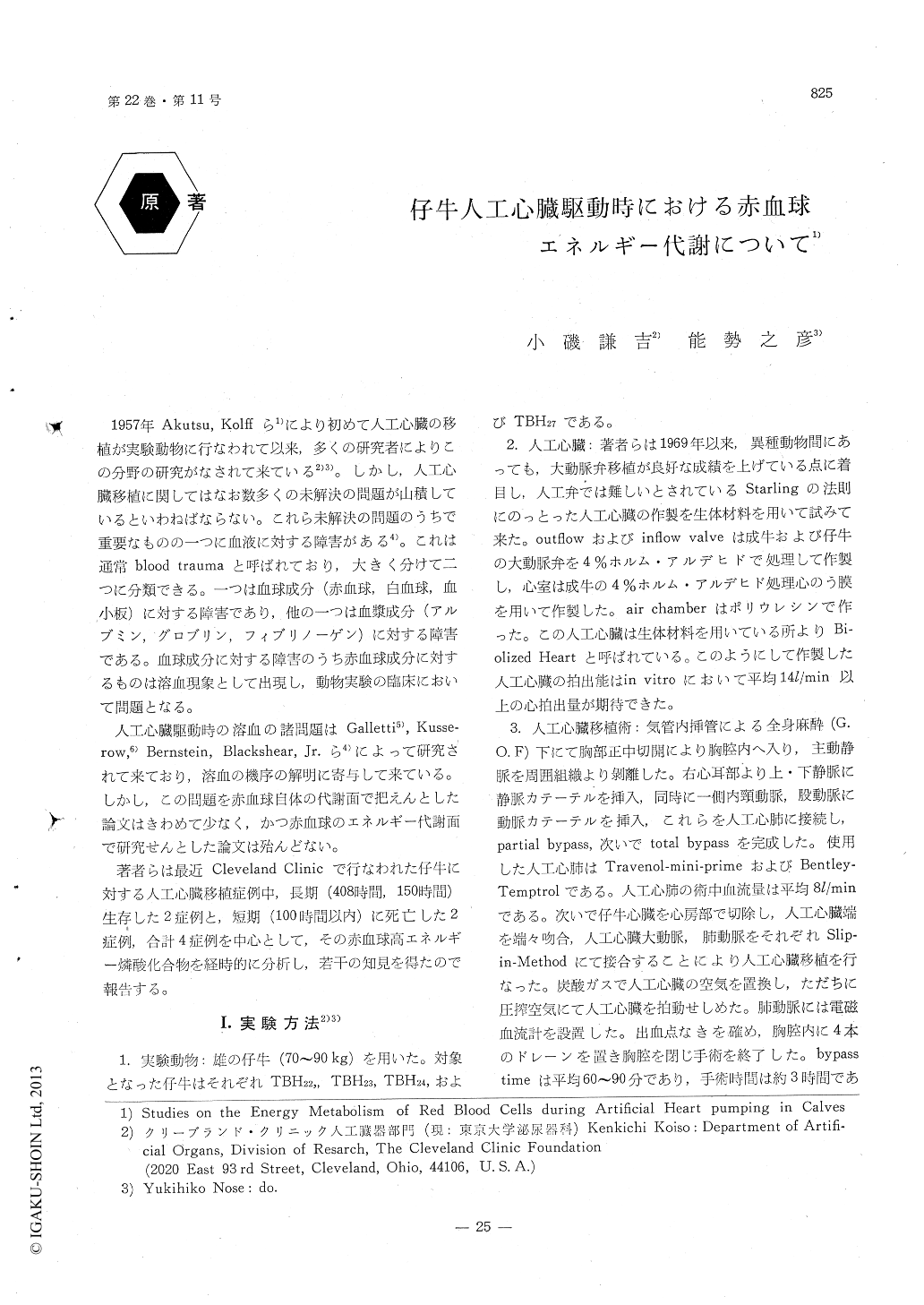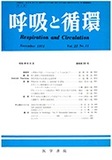Japanese
English
- 有料閲覧
- Abstract 文献概要
- 1ページ目 Look Inside
1957年Akutsu, Kolffら1)により初めて人工心臓の移植が実験動物に行なわれて以来,多くの研究者によりこの分野の研究がなされて来ている2)3)。しかし,人工心臓移植に関してはなお数多くの未解決の問題が山積しているといわねばならない。これら未解決の問題のうちで重要なものの一つに血液に対する障害がある4)。これは通常blood traumaと呼ばれており,大きく分けて二つに分類できる。一つは血球成分(赤血球,白血球,血小板)に対する障害であり,他の一つは血漿成分(アルブミン,グロブリン,フィブリノーゲン)に対する障害である。血球成分に対する障害のうち赤血球成分に対するものは溶血現象として出現し,動物実験の臨床において問題となる。
人工心臓駆動時の溶血の諸問題はGalletti5), Kusse—row,6)Bernstein, Blackshear, Jr.ら4)によって研究されて来ており,溶血の機序の解明に寄与して来ている。しかし,この問題を赤血球自体の代謝面で把えんとした論文はきわめて少なく,かつ赤血球のエネルギー代謝面で研究せんとした論文は殆んどない。
In order to elucidate the energy metabolism of erythrocytes during artificial heart pumping, adenine nucleotides were analyzed on four calves implanted with artificial hearts. They survived for 408, 150, 64, and 41 hours. Analysis of Adenine nucleotides (adenosine-tri-phosphate; ATP, adeno-sine-di-phosphate; ADP, adenosine-mono-phos-phate; AMP.) was performed by the enzymatic method. Morphology of red blood cells was ex-amined on the smears stained by Wright's solu-tion. It was demonstrated that ATP was de-creasing towards the end of pumping. ATP: ADP ratio went down.Crenocytes were increased in number.

Copyright © 1974, Igaku-Shoin Ltd. All rights reserved.


